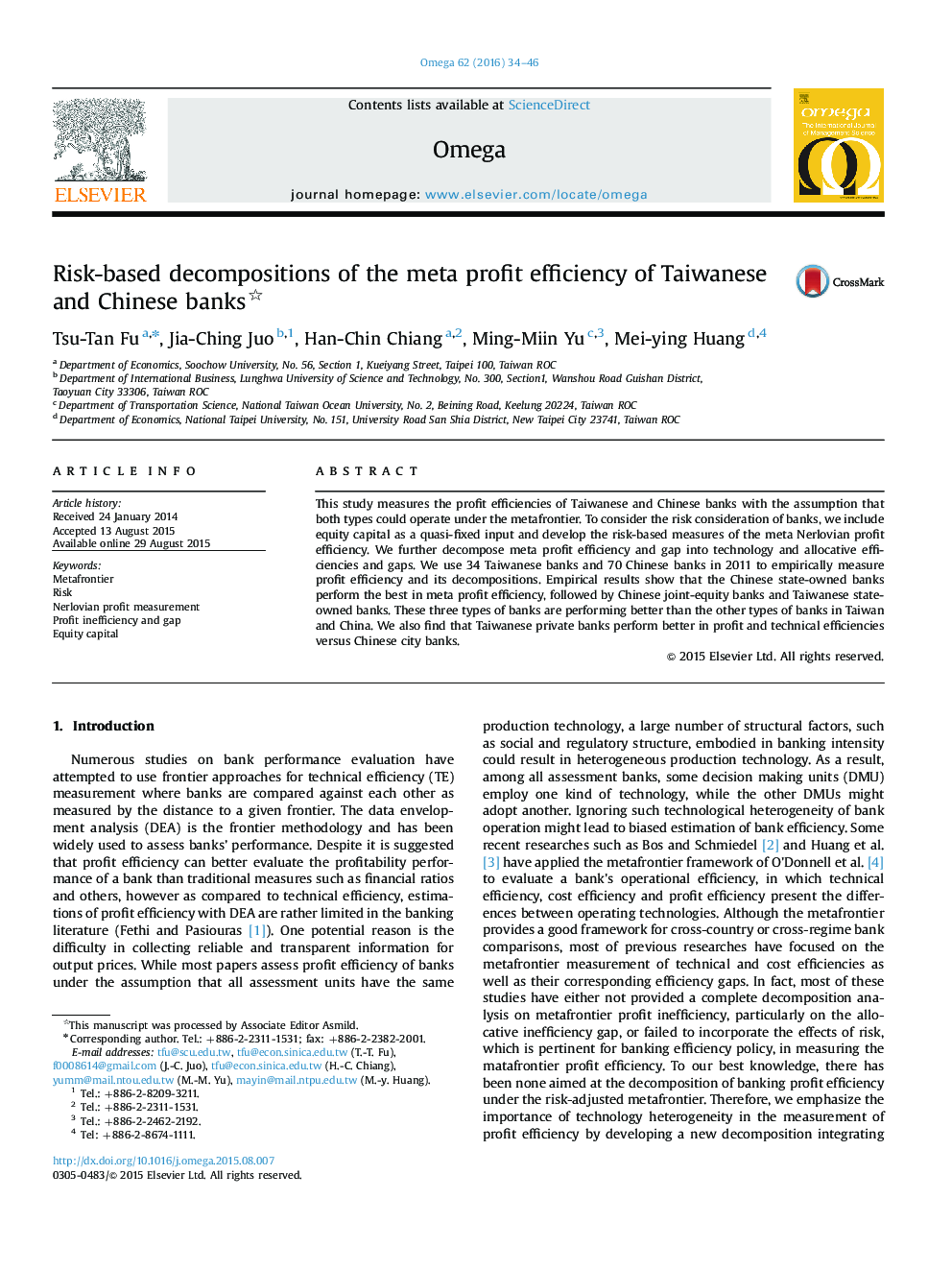| Article ID | Journal | Published Year | Pages | File Type |
|---|---|---|---|---|
| 1032364 | Omega | 2016 | 13 Pages |
•We decompose profit inefficiency under the risk-adjusted metafrontier.•Equity capital is used as the risk-adjusted factor.•Allocative inefficiency gap is first found in this study.•The model is first applied to Taiwanese and Chinese banks.
This study measures the profit efficiencies of Taiwanese and Chinese banks with the assumption that both types could operate under the metafrontier. To consider the risk consideration of banks, we include equity capital as a quasi-fixed input and develop the risk-based measures of the meta Nerlovian profit efficiency. We further decompose meta profit efficiency and gap into technology and allocative efficiencies and gaps. We use 34 Taiwanese banks and 70 Chinese banks in 2011 to empirically measure profit efficiency and its decompositions. Empirical results show that the Chinese state-owned banks perform the best in meta profit efficiency, followed by Chinese joint-equity banks and Taiwanese state-owned banks. These three types of banks are performing better than the other types of banks in Taiwan and China. We also find that Taiwanese private banks perform better in profit and technical efficiencies versus Chinese city banks.
